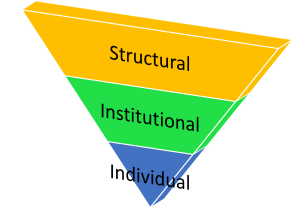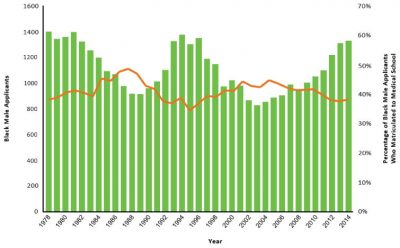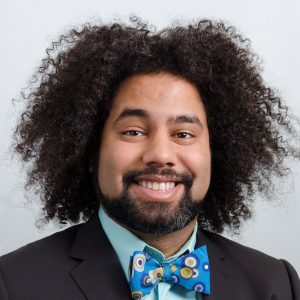Perspective
By Daniel B. Chonde, MD PhD
The following page is a commentary created to act as a primer and supplement to understand, appreciate, and implement the Association of Program Directors in Radiology’s (APDR) Diversity, Equity, and Inclusion (DEI) curriculum.
The views and opinions reflected in this article do not necessary reflect those of the MGH Radiology DEI Committee, the MGH Radiology Department, or those of the institution. MGH does not necessarily endorse any of the following organizations or the opinions they express. The information provided does not necessarily reflect the policy of MGH. The information on this page is meant to provide a historical and theoretical understanding of issues and concepts related to DEI.
First, it is worth recognizing this is challenging material, both from a teaching aspect, but also for the audience. Given the limitations of pre-prepared and collected content, it is easy to skip over material or for the material to feel disjoint. From a content perspective, discussions about the discrimination of marginalized people either due to race, sexual orientation, gender identity, etc have always been challenging in this country, which is why discrimination continues to persist. As a primer, the goal of this is to prepare you to explore and critically evaluate the wealth of material that has already been written on the topic. There is no magic bullet to fix discrimination, no highest authority on the topic, no perfect 12-step program eliminate it. Instead it is an ever evolving conversation between the oppressed and the oppressors, past, present, and future.
Talking about discrimination, especially racial discrimination can be uncomfortable for some folks. Think of it like stretching a muscle–if it isn’t even a little uncomfortable, you’re not doing it right.
Here you will find a collection of definitions of terms that you will likely come across during your exploration of the topic. Following that, will be a collection of sources that have tools on how to combat discrimination in the workplace. Finally, there are links to a small subset of the many resources out there on that topic.
If interested in ways to make your practice more equitable in its staffing, check out the American College of Radiology’s (ACR) 12 Steps to Make Your Practice More Inclusive, Diverse and Welcoming (midway down the page).
Terminology
Terminology is vital to understanding the nuances of DEI and anti-racism work as their use can inform a reader about the mission and priorities of a writer, group, or organization. A major challenge is that terms can differ or have slightly different working definitions from person to person. The APDR does not have a dictionary of terms on their curriculum, so this section will serve that role.
Rather than alphabetical order, these definitions are written in an order which will guide the reader important discussions on the topic.
Additional glossaries of terms can be found at:
The American College of Radiology (Maintained by Nolan Kagetsu, MD, FACR)
Georgetown Library
The Diversity style Guide
Diversity is bringing different people to the table.
Equity is understanding that, in order to do that, some people will need more help than others
Inclusion is listening to, and understanding the inherent value of, what everyone has to say
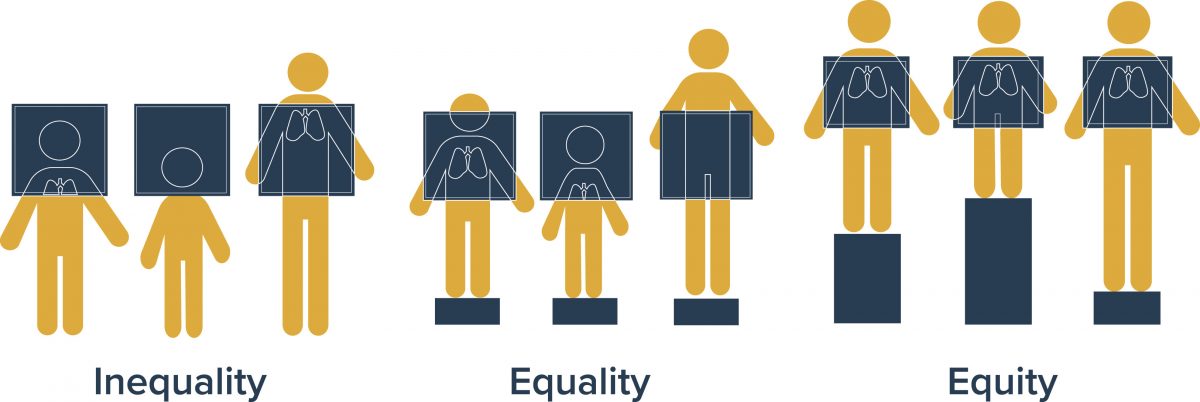
Equality vs Equity – Equality and equity are commonly considered interchangeably; however, they are very different, especially in a DEI context.
- Equality, or the state of being equal, is defined as: of the same measure, quantity, amount, or number as another.
- Equity, or something that is equitable, is defined as: dealing fairly and equally with all concerned.
In an ideal world, equity and equality are the same; however, in the real world there is a history of oppression and discrimination which has been ingrained into society, as such limiting the opportunities of some groups. As such, something that is equitable is not necessarily equal. We have a number of instances in our lives where this difference is highlighted. For instance, it is common for colleges and university to provide need-based financial aid, there by giving those who cannot afford to attend an institution the opportunity to attend. Similarly, our tax structure is based on equity as those who earn less money pay a smaller proportion and absolute amount to the government.
Framed another way, equality and equity are focused on the start versus the outcome, respectively. Equality distributes resources evenly at the beginning while equity seeks a distribution that will provide everyone a similar opportunity to reach the same outcome.
Racism is strictly defined as: belief that race is a fundamental determinant of human traits and capacities and that racial differences produce an inherent superiority of a particular race.
Individual Racism – A person’s belief regarding the superiority or inferiority of a particular race. Individual racism may manifest in the actions or behaviors of an individual. This can be overt or subtle. Examples may include a person who is unwilling to rent an apartment to someone because of the renter’s race or a researcher who only hires assistants of a certain race because they believe them to inherently be better at science.
Institutional Racism – When individuals have authority of an institution they can inform the culture of said institution. As such, they can perpetuate racism through engendering a culture of discriminatory treatment, unfair policies and inequitable opportunities and impacts, based on race. This can become ingrained in the institution through actions like the continued hiring of like-minded individuals. Institutional racism could include schools that have rules that discriminate against a particular type of hair (e.g. braids) or prohibit some types of religious attire (e.g. hijabs). Additionally, financial institutions that will not lend to individuals of a certain race (or from areas that are a high percentage of a certain race–see redlining).
Systemic Racism – When multiple institutions (schools; mass media; local, state, and federal government; etc.) suffer from institutional institutional racism, there is an interplay of policies, practices, and programs spanning the all aspects of society which serve to inhibit and have preferential adverse affects on a particular race. For example, unfair criminal justice practices leading to over-incarceration of black men which in turn leads to disproportionate single-parent, single-income households as well as the absence of the creation of inter-generational wealth. Also, Sundown towns, were all-white neighborhoods in the United States practiced a form of racial segregation by excluding non-whites via some combination of discriminatory local laws, intimidation, and violence.
Underrepresented in medicine – Underrepresented in medicine is a term which has become fuzzier over time, but has traditionally referred to racial minorities who are underrepresented in the medical specialty. With regards to its implication in the medical workforce, we will explore the Association of American Medical Colleges’ (AAMC) definition. Originally the AAMC used the term underrepresented minority (URM) which consisted of Blacks, Mexican-Americans, Native Americans (that is, American Indians, Alaska Natives, and Native Hawaiians), and mainland Puerto Ricans.
In 2001 Barbara Grutter filed suit against the University of Michigan, including the president of the university at that time, Lee Bollinger, alleging she was discriminated against on the basis of her race (in violation of the 14th Amendment) because the law school considered race, though preferential consideration of underrepresented minorities, a “predominant factor” in its admissions decision. The suit percolated through the courts, eventually making it to the Supreme Court. The AAMC, with 14 other health organizations, responded with an amicus brief. During this time, another similar case, Gratz v. Bollinger, was brought to the supreme court arguing that a points-based system for admission which awarded points based on URM status was unconstitutional. While in Grutter v. Bollinger the court upheld that consideration of URM status in admissions, it required that it must be done narrowly and consider other factors. At the same time, in Gratz v Bollinger, the court famously struck down the use of points-based systems for scoring applicants.
Following Grutter v. Bollinger, the AAMC adopted a broader term, underrepresented in medicine (URiM or URM), which they define as:
“Underrepresented in medicine means those racial and ethnic populations that are underrepresented in the medical profession relative to their numbers in the general population.”
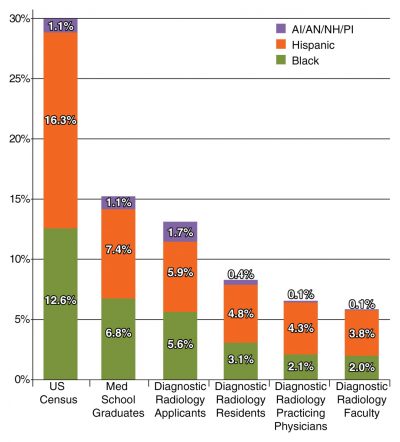
Distributions of URM groups in medicine for 2010 in order of descending representation of the U.S. population, U.S. medical school graduates, and diagnostic radiology residency applicants, residents, practicing physicians, and faculty. Non-URM category is not shown. From Current Status of Diversity by Race, Hispanic Ethnicity, and Sex in Diagnostic Radiology.
Model Minority – model minority, or the model minority myth, is the idea that some minority groups, traditionally the amalgamation of people referred to as Asians, are polite, smart hardworking, law-abiding people who have overcome adversity to rise to the top. Here is where we would write the historical context, but a video is worth at least 1,000 words.
Death by 1000 paper cuts – racism and other forms of systemic discrimination have been referred to as death by 1000 paper cuts. If a system which systematically reinforces the supremacy of one group of people over another at multiple levels remains in place, marginalized groups experience the consequences from the institutions and people that make up that system again, and again, and again. The cumulative effect of racism, even small innocuous microaggressions or the hinderance ostensibly created by demands of respectability politics, can have a considerable net effect.
For instance, consider a teacher who gives a student less attention because of their perception of that student. Ideally this situation would be identified by the students guidance councilor and corrective action could be taken; however, if the student’s guidance councilor has similar biases it could influence the student’s perception of themselves and their potential. Today we recognize these situations leading to an underrepresentation of women in STEM, however it also affects URMs.
Small discriminatory behaviors, either conscious or subconscious, are termed microaggressions.
Active Bystander/Upstander or What I Can Do in My Daily Life
There are numerous groups out there committed to promoting equity and support training on how individuals can combat racism. One very common tool is bystander intervention. At its core, bystander intervention is recognizing a potentially harmful situation or interaction occurring for someone else and choosing to respond in a way that could positively influence the outcome. Bystander intervention training is becoming increasingly common in colleges and the workplace, with a curriculum even implemented as part of US Army training.
The topic of active bystander/upstander has also been discussed in the lay press.
Below are a number of groups who are known for their work in the development of bystander training. MGH does not endorse any of the following companies or organizations, and the information below is included to provide historical context and an understanding of the concept of bystander intervention training.
American Friends Service Committee
The American Friends Service Committee (AFSC) is a Quaker founded organization with the mission of working with communities and partners worldwide to challenge unjust systems and promote lasting peace.” Founded in 1917 to assist civilian victims of World War I and provide an opportunity for conscientious objectors contribute in nonviolent ways. It has subsequently become a effective advocates for racial justice, women’s issues, and the equal treatment of sexual minorities. The AFSC, along with the British Friends Service Council (FSC), shared the 1947 Nobel Peace Prize for their humanitarian work.
Some of their material can be found here.
Hollaback!
Hollaback! began as a photoblog to document harassment following an incident where a woman on the subway photographed and posted a picture of her harasser online, leading to his eventual arrest. Using the model of documenting individual encounters of street harassments , Hollaback! grew in popularity and is active in 79 cities, 26 countries, and operates in 14 languages. Soon after its inception, Hollaback!, in partnership with Green Dot, launched its bystander intervention training, becoming the first organization to develop workshops and trainings for bystanders responding to public harassment. Its curriculum has continually be improved over time, partially in partnership with the Southern Poverty Law Center, and is compliant with local, state, and federal laws — heavily focused on its bystander intervention component. Hollaback! has been recognized internationally for its work, and notably by President Barack Obama.
You can learn more about their bystander intervention methodology here.
Step UP!
Step UP! is another program that teaches prosocial behaviors and bystander intervention. Created for younger adults, StepUP! is partnered with a large number of colleges, universities, and organizations and revolves around teaching how to identify problematic situations as well as action steps which include (from the Step UP! website) :
- Be Ready – You know at some point you will hear or see something that is inappropriate or discriminatory. Think of yourself as the one to Step UP!, prepare yourself for it and know what you will say. “Why do you say that?” or “Do you really mean what you just said?”
- Identify the Behavior – Point out someone’s behavior to help them hear what they are really saying. “So, what I hear you saying is that all student-athletes don’t care about academics?”
- Appeal to Principles – Call on a person’s higher principles. “I’ve always thought you were fair-minded. It shocks me to hear you say something so biased.”
- Set Limits: Draw a Line – You can’t control others but you can make others aware of what you will not tolerate. “Don’t tell racist jokes or use that language in my presence anymore. If you do, I will leave.” Follow through.
- Find an Ally/Be an Ally – Seek out like-minded people and build strength in numbers.
https://thetoolkit.wixsite.com/toolkit/what-is-white-privilege
The following was a perspective piece created to assist in the understanding and appreciation of the Diversity, Equity, and Inclusion curriculum created by the Association of Program Directors in Radiology. The opinions expressed in this piece do not necessary reflect those of the MGH Radiology DEI Committee, the department, or the institution.
Daniel B. Chonde, MD PhD is the Co-Chair of the MGH Radiology DEI Committee’s Education Subcommittee. He conceived of, and helped orchestrate, the MGH Juneteenth 2020 celebration in collaboration with the Front Porch Arts Collective, the MGH Office of Equity and Inclusion, and the MGH Center for Diversity and Inclusion. He continues to manage a collaboration between MGH Radiology DEI and Front Porch Arts Collective. He created diversityxMESH, a collaboration between MGH Radiology DEI and the MESH Incubator. He conceived of, and organized, Rad Boot Camp: REI, a longitudinal collaboration between the diversity committees of Emory Healthcare and Vanderbilt University Medical Center aimed at increasing diversity in the radiology. He helped found, and is a current member of, the American College of Radiology Gender Diversity Taskforce whose mission is to create an inclusive environment for transgender and gender diverse patients, staff, and trainees.

